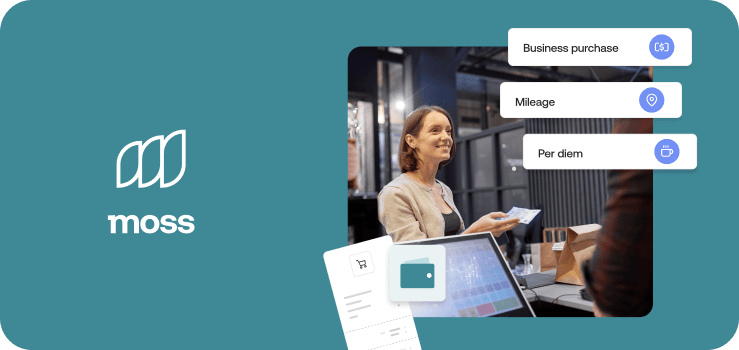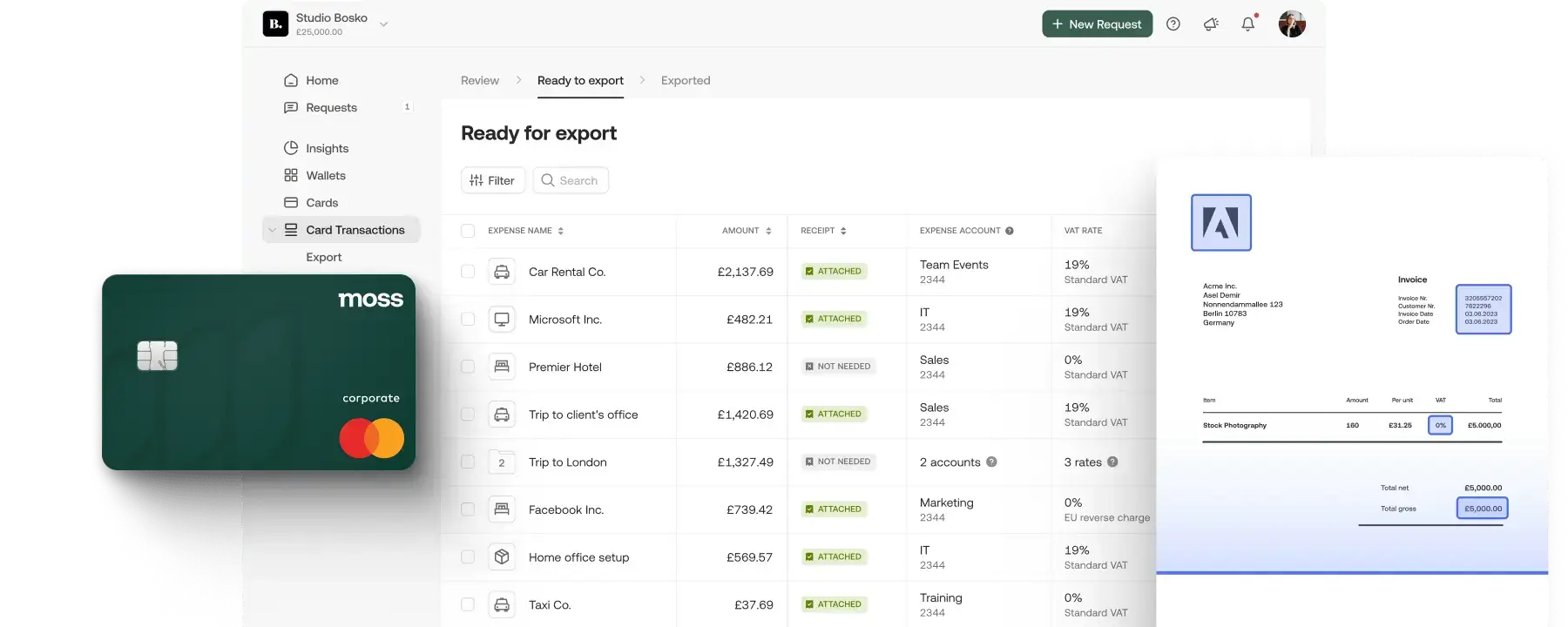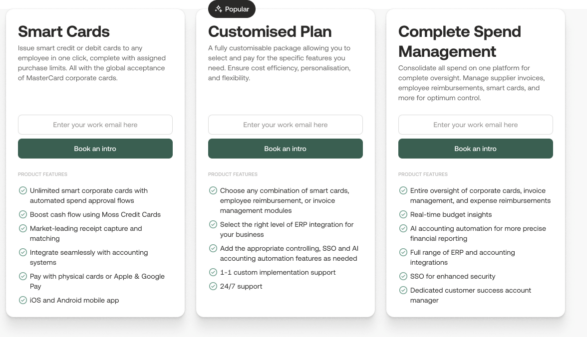Business spending comes in many different forms, from business travel expenses to the various expenses that fall within your digital marketing budget.
There are many different ways to categorise the ways businesses spend money. One of the most important distinctions for budgeting purposes is discretionary spending vs. non-discretionary expenses — also known as essential expenses and non-essential expenses.
This distinction is important for calculating the tax a business owes, and ways to effectively adjust its budget in times of need.
In this guide, we’ll explain discretionary spending in detail, including the various different types of discretionary expenses. We’ll also explain how you can manage your discretionary spending to limit the amount of cash leaving your business.
What is discretionary spending?

First let’s define discretionary spending. The term is often used when describing personal finances and the ways in which a household may spend its money. But the same definitions apply to businesses too.
Discretionary spending = expenses that are non-essential for your business to operate
Non-discretionary spending = expenses that are essential for your business’s survival
The boundary between essential and non-essential may seem clear at first glance. But many things that you think would be classified as essential are not.
How do you define non-discretionary expenses for businesses?
Simply put, non-discretionary expenses are things that you have no choice but to pay. Your business depends on these expenses to stay afloat, and failing to pay them can result in fines, legal action, or the collapse of essential business processes.
As a result, your budget should always prioritise non-discretionary spend before anything else. This includes employee salaries, taxes, certain types of insurance, business licences, etc.
But there are other non-discretionary expenses that vary from business to business. For example, certain businesses require specific pieces of software or equipment to produce their goods or provide their service, while others don’t. Then there are other businesses which operate from physical stores only and have to pay to lease their premises, while others sell primarily online.
Different types of discretionary spending

As we’ve pointed out, the expenses that can be classed as discretionary vary depending on the business in question. However, some common examples include:
Marketing and advertising:
Marketing is very important, especially for smaller businesses and start-ups who need to increase brand and product awareness. However marketing expenses are, in the majority of cases, considered discretionary.
Employee perks:
Employee perks are a big focus for companies that want to attract and keep the best talent. However, these perks are discretionary expenses, and are commonly cut if businesses face serious budgetary constraints.
Software subscriptions:
Certain pieces of software, like accounting software, are essential for every business. However, many software platforms are discretionary expenses, and can be cut from inventory for easy cost savings.
If you do need to cut your software costs, but don’t want to get rid of a specific platform altogether, a good option can be downgrading to a more basic pricing option. You’ll get fewer features, but still retain the basic functionality that you need.
Consultancy:
Consultancy fees are another expense that can be classed as discretionary or non-discretionary. For example, legal consultancy fees are often vital for your business, and should be considered non-discretionary. Other consultancy fees, like management or recruitment consultancy, are a luxury and should be considered fully discretionary.
Why discretionary spending is important
Although discretionary spending is non-essential by definition, understanding how to manage and when to alter discretionary spending is an essential part of running a business.
Competent business owners know how to balance the additional value that discretionary spending adds to their business with the monetary value of that spending.
Take the various costs associated with team building activities and staff social events, for example.
These costs are wholly discretionary. They’re not essential for keeping the business running, and not paying them will free up a significant chunk of the budget that can be used elsewhere.
But, just because something isn’t ‘essential’ for the running of a business, doesn’t mean it’s not important for other reasons.
Team events have a huge impact on company spirit and the general willingness of employees to stick with the company. The same applies to expenses like your digital marketing budget. Marketing is essential for building brand awareness and getting more customers to buy your product.
Blindly cutting this sort of discretionary spending can have a huge negative impact on you business, so you need to adopt a much more nuanced approach.
How discretionary spending fits into your overall budget

Discretionary spending is tricky to identify and tricky to calculate for a couple of reasons:
- Discretionary spending takes place across many different departments and cost centres within a business. Each one of these departments or teams will spend differently, and each one will have different reasons for spending what they do.
- Discretionary spending is also much more irregular than non-discretionary spending. It can vary massively from month to month, with different types of expenses popping up at different times. Non-discretionary spending, on the other hand, tends to fit into much clearer categories, with regular monthly invoices from the same suppliers.
This means that it’s significantly harder to forecast discretionary spending. And, consequently, harder to work out how it should fit into your overall budget.
In personal finance, there’s a commonly stated rule of thumb that you should split your income after tax as follows:
- Spend 50% on needs
- Spend 30% on wants
- Put the remaining 20% in savings
In this case, 50% of your post-tax income would go on non-discretionary essentials, i.e. rent, utilities, food, etc., while the remaining 50% would be free for discretionary expenses and savings.
Unfortunately in the world of business, breaking down a monthly budget isn’t this simple. But there are some strategies and tools that can help.
How to manage discretionary spending

The biggest influencing factor on your approach towards managing discretionary expenses and non-essential spending is the financial health of your business and, by association, the state of the wider economy.
When the market is strong and you’ve got good positive cash flow, it’s important to target discretionary spending towards:
- Strengthening your product or service
- Growing your employee base
- Increasing your finances
Given the economic downturn we’ve seen over the past couple of years, many businesses have had to find ways to cut discretionary expenses instead. Households and governments have faced the same issue.
But cutting non-essential spending is not as straightforward as simply cutting anything that’s not immediately essential for the survival of your business. Managing discretionary spending requires a more strategic approach:
- Tie discretionary spending to strategic objectives
To prioritise your discretionary spending, you need to understand which benefits each type of discretionary spend will bring to your business.
- Quantify discretionary spend wherever possible
Being able to understand the real value that various types of discretionary spending brings to your business is also essential. Businesses commonly calculate marketing ROI, but it can be difficult to do the same for other types of discretionary spend, e.g. employee perks and events.
It’s usually best to combine quantitative evaluations with qualitative evaluations to come up with a realistic evaluation of the impact of your spend.
- Evaluate spending cuts in the medium-to-long term
It’s also essential to think ahead when cutting spending on discretionary expenses. Firstly, certain expenses require significant investment if you want to initiate them again in the future.
A prime example is employees. Cutting your employee headcount may reduce expenditure in the short term, but there are all sorts of additional costs that you need to take into account. There’s redundancy pay, recruitment and rehiring costs, loss of expertise, etc. In this case, cutting employee and management bonuses is a much more sensible option.
It’s normal for businesses to reimburse their employees for a number of different work-related expenses, the majority of which are discretionary. This includes travel expenses, certain equipment costs, and expenses for social events.
When it comes to managing these employee expenses, your expense policy is your most powerful tool. Outlining exactly what your employees can and cannot charge to the company makes it easier to control the expense costs you’ll have to pay to your employees. It’s also possible to cut costs by targeting non-discretionary spend too, e.g. increasing efficiency in core business processes.
Spend management software
The tips we’ve outlined so far have targeted strategic changes you can make to the way your business spends its money.
However, to build effective strategy, you need accurate insights. That’s where spend management software comes in. It provides the real-time data and spend controls that you need to understand exactly where your money is going, and the power to control how much money each of your departments has access to.
| Compare your company’s spend with industry averages: Try our comparison calculator to see how your costs compare to the industry average. >>Benchmark your SaaS spending now!<< |
Managing expenses with Moss

Moss’s all-in-one spend management platform allows Moss customers to take full control of their business expenses with a range of different tools.
Moss corporate credit cards lie at the heart of our vision for more effective spend management. Moss customers can issue corporate credit cards for individual departments, cost centres, and even employees, for unrivalled spend visibility. Your employees can use their Moss card like any other card, all you have to do is approve their purchases in the Moss app.
Meanwhile, Moss insights draws data from all of your connected business accounts to build detailed financial reports that you can use to aid your strategic financial planning and analysis.
FAQs
Discretionary expenses are expenses that are non-essential to the survival of your business. In other words, they’re costs that you can cut without being threatened with severe negative consequences, including fines and legal proceedings, etc.
Non-discretionary spending is the opposite to discretionary spending. It’s the essentials that you have to pay to keep your business afloat. Examples include utilities, debts and employee salaries.
To cut discretionary expenses effectively, you need to assess how important they are to your business. certain discretionary expenses aren’t essential, but they play an important role in the long term success of your business.
First you need to classify which expenses are discretionary and which aren’t. Once you’ve done this, you simply need to add up each expense, and you’ll have the total amount of money that your business is spending on ‘non-essentials’.
Assessing the impact of discretionary spending on your business can be difficult. With some types of discretionary spending it’s possible to calculate a reasonably accurate ROI. However, for most, you have to rely on a mix of qualitative and quantitative assessment to come up with a reasonable appraisal.








